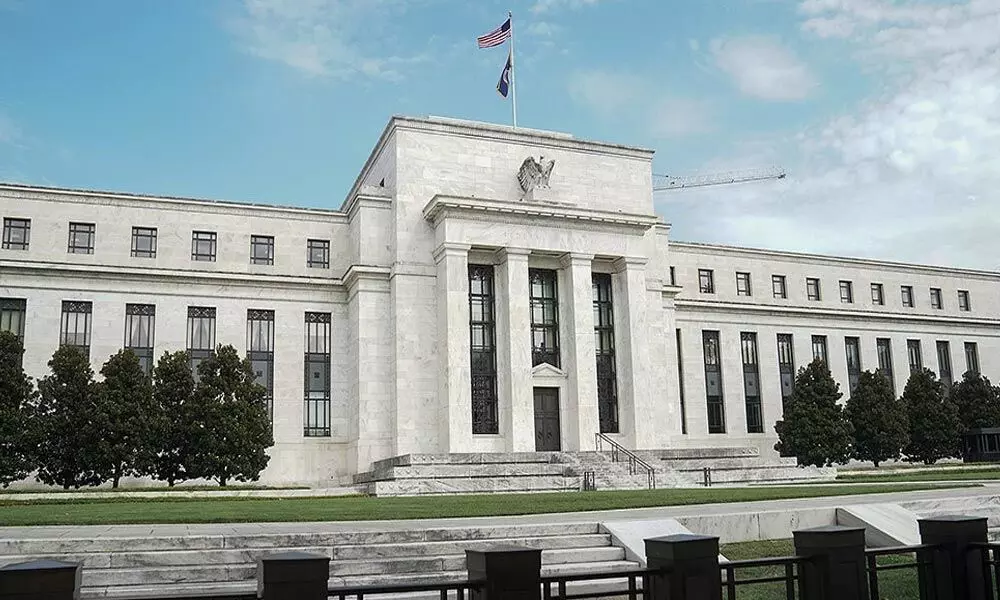Why pandemic nostalgia haunting central banks?
When Covid arrived and economies tanked, officials knew what to do. Things are better now - and much harder to navigate, while the risks of a misstep are significant
image for illustrative purpose

The global economy is in a tricky stretch. We are mid-passage between terrible days and better times. Never mind foresight, which might be too much to ask. I'll settle for some really useful hindsight
It's almost enough to make you nostalgic for the early months of the pandemic. There was clarity of economic purpose: dramatic cuts in interest rates and big fiscal commitments. The outlook was so dire there were few plausible alternatives. Conditions are much more favourable now, and ironically, that makes the choices tougher.
The economic recovery is looking a little shopworn. Growth is solid, but the pace of expansion has slowed. The jobs picture is better, though far from ideal. Inflation is no longer so low that it qualifies for the endangered species list. If anything, it's a bit too high for comfort. "Transient," once the Federal Reserve's favourite word to describe the spike in prices, doesn't mean gone tomorrow. Central banks are beginning to trim accommodation, or thinking about doing so, but are starting to trip over their messages. The risk of a misstep is significant.
The International Monetary Fund trimmed its 2021 global growth forecast Tuesday, warning that momentum has been lost. Gross domestic product will increase 5.9 per cent this year, down from the 6 per cent projection made in July. The slight reduction obscured more worrying trends. The delta variant, strained supply chains, accelerating inflation and rising costs for food and fuel are chipping away at confidence.
This uneven picture has made it tough to predict precisely where central banks are coming from. Different officials, sometimes from the same place, are offering varying paths out of ultra-easy money. Two Bank of England policy makers created a fuss last weekend when they signalled a faster degree of tightening might be forthcoming. Sometimes policy makers can't even agree on what just happened, even after they pulled off a shock rate hike, as happened in Poland last week. This is unnerving. One of the big themes of the past two decades has been the value placed on forward guidance, the art of officials telling you what they are going to do well in advance and doing their best not to deviate too often. The idea is that more transparency means less potential for market upheaval.
A wrenching pandemic wasn't at the front of central bankers' minds when forward guidance came long. Nonetheless, it's jarring when you are used to consistency and what happens is the opposite. That's what makes the case of Poland so interesting - and terrifying. The hike of 40 basis points in the benchmark mark to 0.5 per cent not only stunned economists, but appeared to fly in the face of remarks by no lesser person than the bank's governor, Adam Glapinski, who was saying until just a couple of days earlier that such a move was some ways off. Speaking afterward, Glapinski said: "We had to tighten but not by too much so as not to suffocate the patient." It begs the question: What disease ails the patient? If inflation is truly a big issue, then 40 basis points isn't going to do anything.
For transparency, it's hard to fault the Bank of Korea, which raised rates in August - as widely flagged - and made it quite clear Tuesday that another nudge awaits in November. The Reserve Bank of New Zealand last week made good on a commitment to push up borrowing costs and signalled there are more where that came from.
It's become popular, though misleading, to label today's global challenges "stagflation," a reference to an invidious economic condition that abounded in the 1970s. Excessive inflation was a real problem that decade. By 1980, inflation in the US was approaching 15 per cent. There were on-again-off-again recessions. Paul Volcker, who was appointed Fed chair in 1979 and was credited with defeating inflation via truly dramatic hikes in rates - the Fed's key rate reached 20 per cent - would probably have laughed at some of the comparisons. (He passed away in 2019.)
Still, worrywarts aren't totally off the mark. Morgan Stanley suggests a better point of comparison is 2004 and 2005 when the term was again in vogue. Prices were creeping up, central banks were tightening and growth looked to be off the boil. "These fears eventually passed as growth rebounded and inflation moderated, but we think that 2005 may provide a useful reference point for a scare that comes far short of the 1970s," strategist Andrew Sheets wrote in a note Sunday.
The global economy is in a tricky stretch. We are mid-passage between terrible days and better times. Never mind foresight, which might be too much to ask. I'll settle for some really useful hindsight. (Bloomberg)

